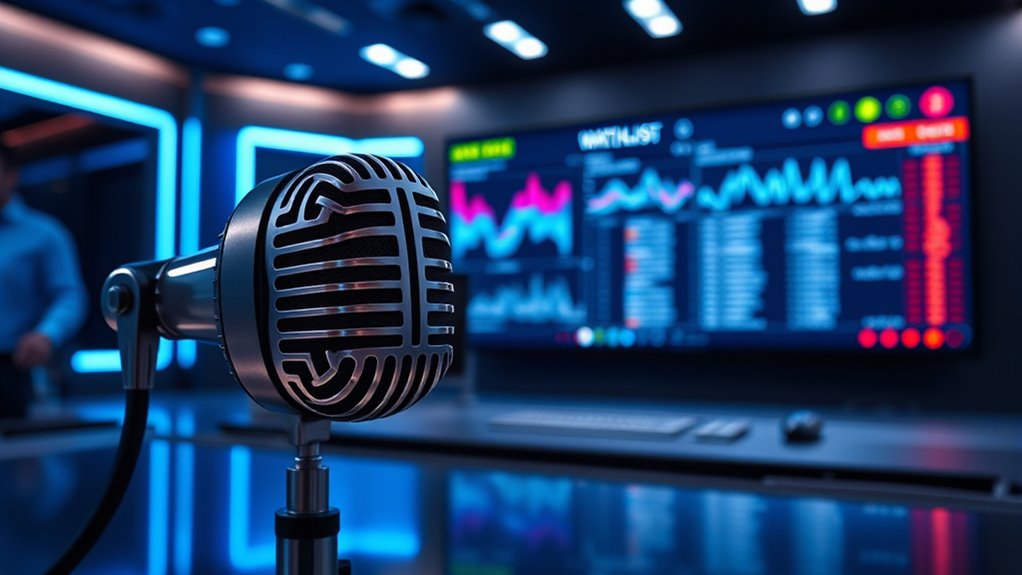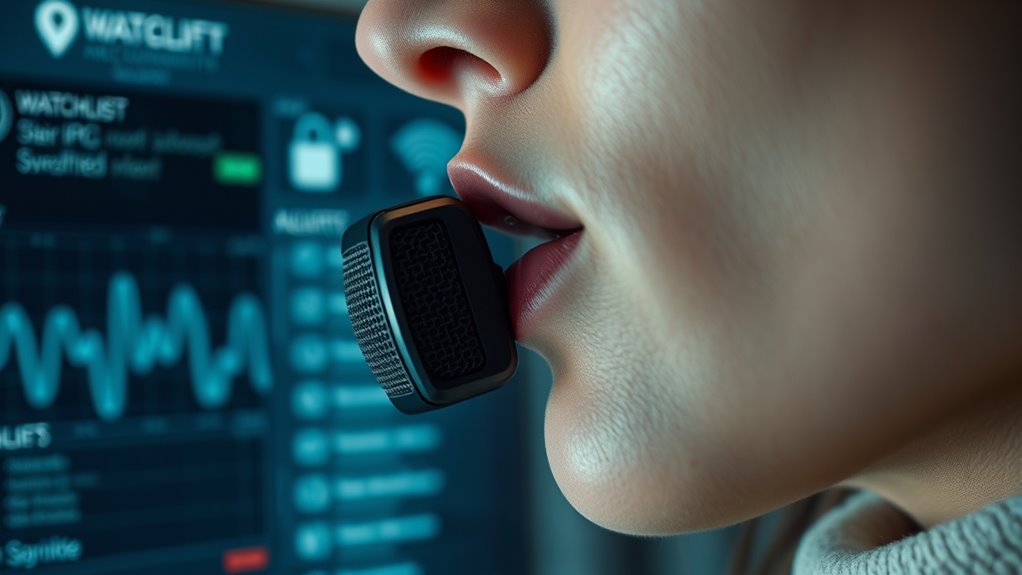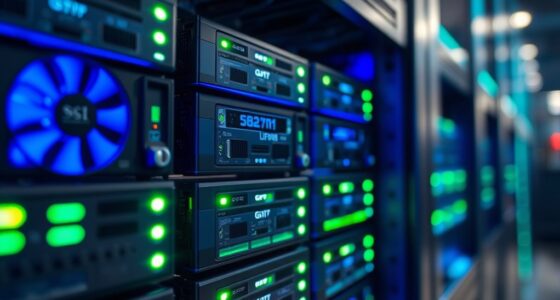Voice biometrics now guarantee reliable access, whether you’re whispering or speaking loudly. These systems can verify subtle voice nuances at close range and handle large-scale watchlists for high-security needs. They use advanced algorithms to analyze pitch, tone, and speech patterns, making impersonation difficult. As technology improves, voice biometrics become more accurate and versatile. Keep exploring to discover how these innovations can secure your personal and professional life even further.

Have you ever wondered how your voice can serve as a secure way to verify your identity? Voice biometrics has become an increasingly popular method because it leverages something unique to you—your voice patterns. Unlike passwords or PINs, your voice is inherently tied to your physical and behavioral traits, making it much harder for someone to fake or steal. When you speak, your voice creates a digital fingerprint, capturing features like pitch, tone, cadence, and speech rhythm that are nearly impossible to replicate exactly. This makes voice biometrics a powerful tool for authentication across a variety of settings, from banking calls to mobile apps.
The technology works by first capturing a sample of your voice, which is then converted into a digital template stored securely in a database. When you try to verify your identity again, your voice sample is compared to this stored template. Sophisticated algorithms analyze the acoustic features and determine whether the match is close enough for authentication. Because voice can vary depending on factors like illness, emotional state, or background noise, modern systems incorporate adaptive algorithms that can accommodate these fluctuations, reducing false rejections and improving user experience.
One of the key strengths of voice biometrics is its convenience. You don’t need to remember complex passwords or carry around tokens; instead, you simply speak. This ease of use enhances security because it reduces the likelihood of users resorting to insecure practices like writing down passwords or choosing easily guessed ones. Additionally, voice authentication can be integrated into existing customer service channels, making the process seamless without requiring extra steps or hardware. It also allows for remote verification, which is crucial in a world increasingly reliant on digital interactions.
From whisper to watchlist, voice biometrics can be used in a variety of security layers. Mild voice prompts can authenticate a user during a phone call, while more advanced systems can flag suspicious or high-risk voices by comparing against watchlists or blacklists. This capacity for real-time monitoring and alerting strengthens security protocols, especially in sensitive environments like financial institutions or government agencies. The technology continues to evolve, incorporating machine learning and AI to improve accuracy, reduce bias, and handle a broader range of voices and conditions. As voice biometrics advances, it’s clear that your voice is becoming more than just a way to communicate—it’s a vital security asset that works behind the scenes to keep your identity safe.
Frequently Asked Questions
How Secure Are Voice Biometrics Against Spoofing Attacks?
Voice biometrics are quite secure against spoofing attacks when advanced techniques are used. You benefit from multi-layered security, including liveness detection, which verifies if the voice is real and not a recording or synthetic. Continuous updates and machine learning improvements help identify fake voices. While no system is entirely foolproof, these measures markedly reduce the risk of spoofing, giving you greater confidence in voice authentication.
Can Voice Biometrics Work Across Different Languages and Dialects?
Yes, voice biometrics can work across different languages and dialects, but their accuracy depends on the system’s design. If it’s trained with diverse voice samples, it can recognize various accents and languages effectively. You should choose solutions that incorporate multilingual datasets and adaptive algorithms. This way, you guarantee reliable authentication no matter what language or dialect you speak, making your system both flexible and secure.
What Are the Privacy Implications of Voice Biometric Systems?
Imagine you’re living in a sci-fi movie—voice biometric systems raise real privacy concerns. You might worry about data breaches, unauthorized access, or misuse of your voiceprint. These systems can track your habits and location, potentially infringing on your rights. It’s essential to stay informed about how your voice data is stored and used. Protect your privacy by choosing systems with strong security measures and clear policies.
How Does Background Noise Affect Voice Recognition Accuracy?
Background noise can considerably impact your voice recognition accuracy by interfering with the system’s ability to identify your unique voice features. When there’s loud or unpredictable noise, the system struggles to distinguish your voice from the background, leading to errors or false rejections. To improve accuracy, make sure you’re in a quiet environment, use noise-canceling microphones, or rely on advanced algorithms that filter out background sounds effectively.
Are Voice Biometrics Suitable for Cold or New Users?
Voice biometrics can be suitable for cold or new users, but it depends on the system. Most modern solutions are designed to learn quickly, so even first-time users can be authenticated smoothly. Just keep in mind that initial enrollments might take a few seconds, and background noise can throw a wrench in the works. Once set up, your voice becomes a reliable key—no more fussing with passwords.
Conclusion
You see, voice biometrics are transforming security—imagine verifying your identity just by speaking. For example, a bank could use voice recognition to quickly authenticate you during a call, reducing fraud. Picture a watchlist system that flags known threats based on their unique voice patterns. These innovations make security seamless and personalized, proving that from whisper to watchlist, voice biometrics truly work, making your digital and physical world safer and more efficient.









